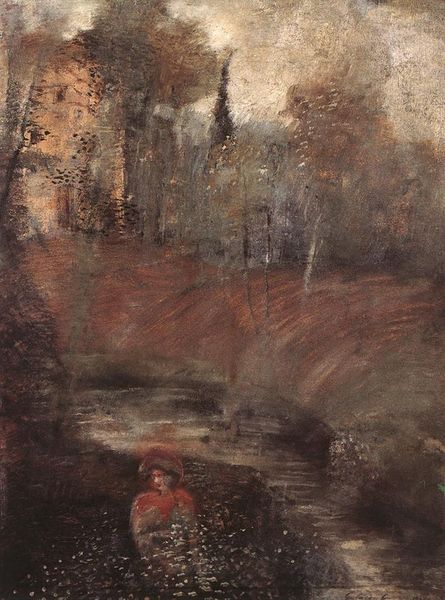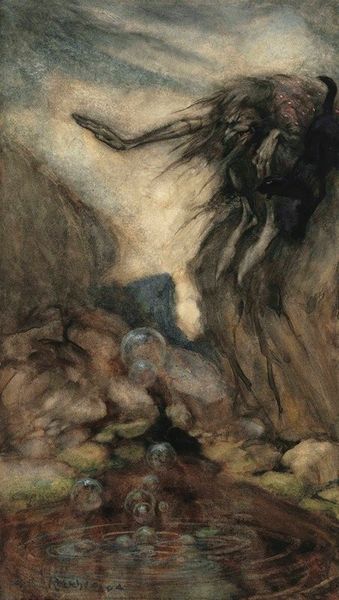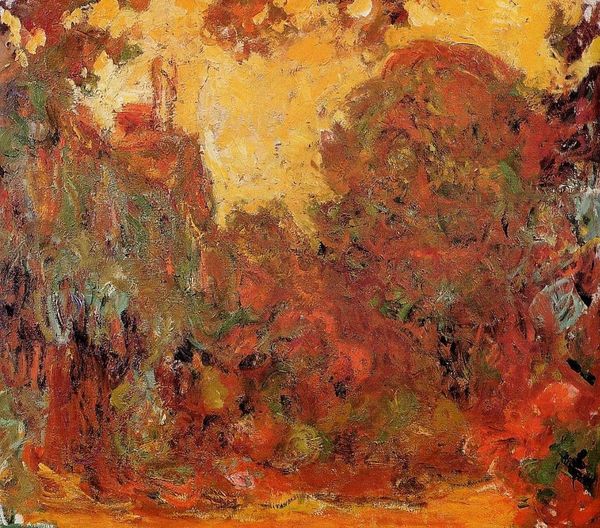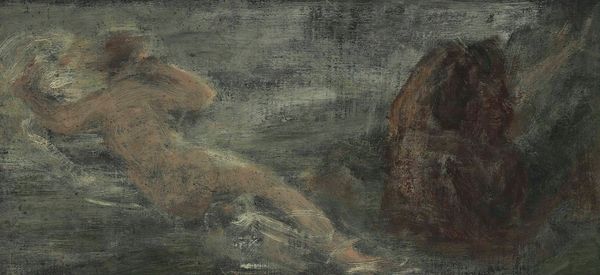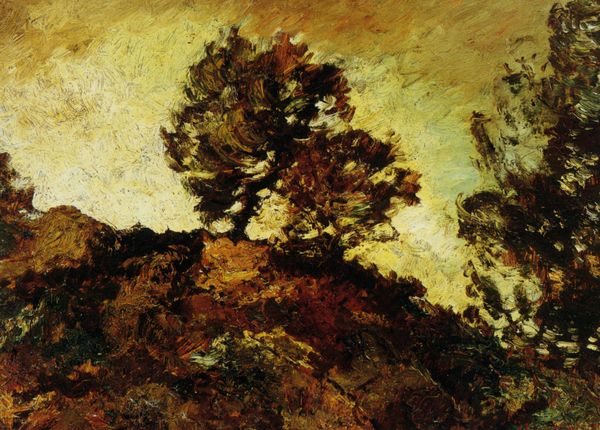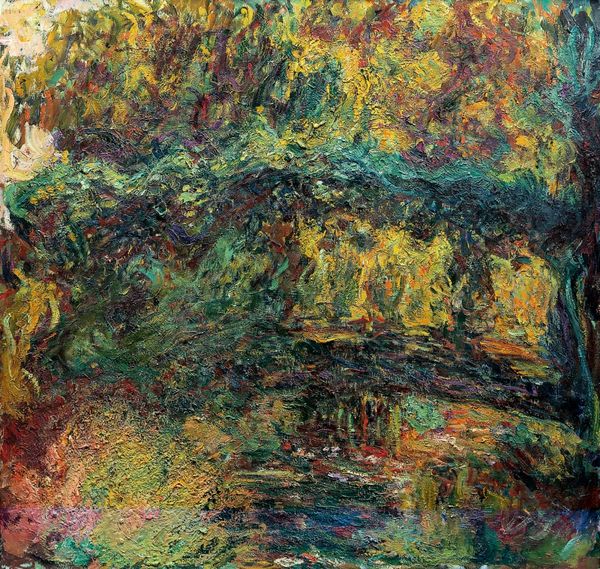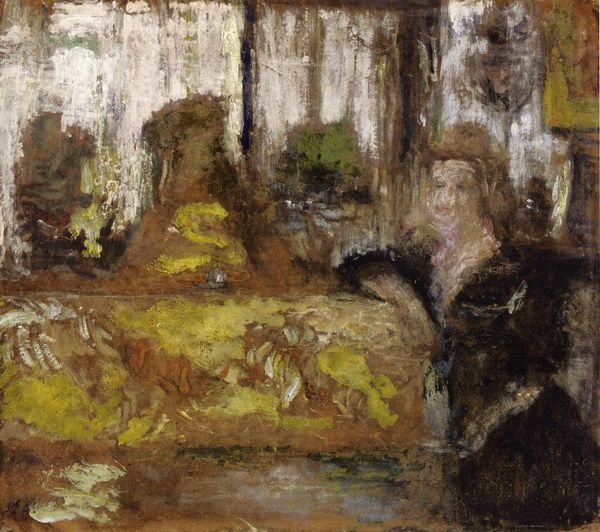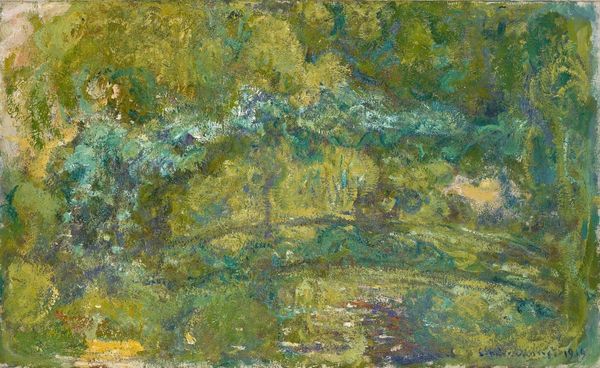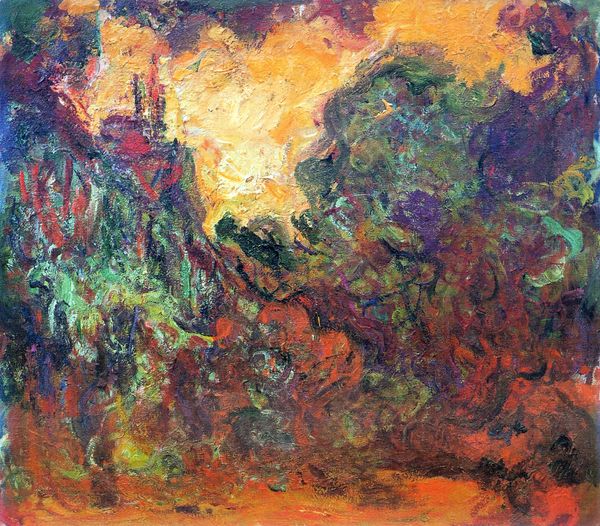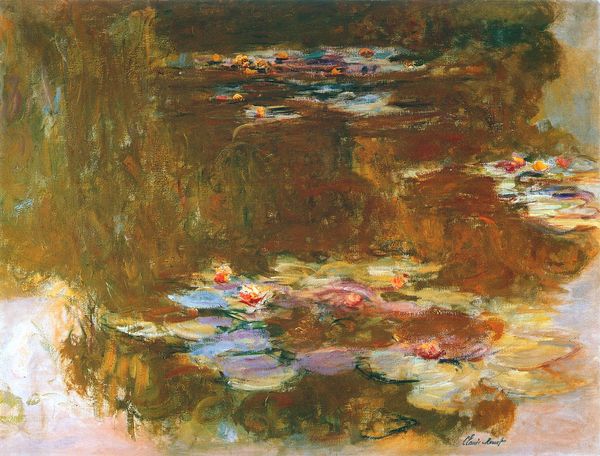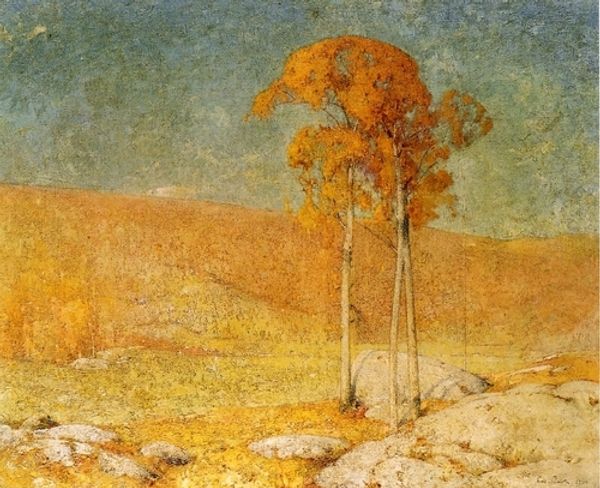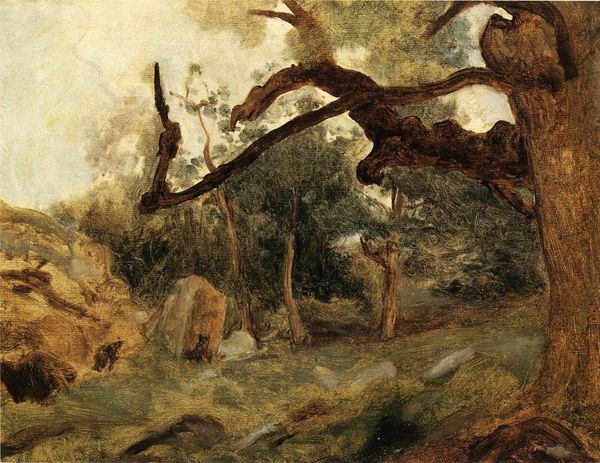
painting, oil-paint
#
painting
#
oil-paint
#
landscape
#
fantasy-art
#
figuration
#
oil painting
#
female-nude
#
roman-mythology
#
mythology
#
symbolism
#
post-impressionism
#
nude
Dimensions: 51 x 64 cm
Copyright: Public domain
Curator: Look at this intriguing piece; it’s Odilon Redon’s "The Cyclops," an oil painting from around 1900. Editor: My first impression is one of startling contrast – the grotesque Cyclops looming over an almost idyllic landscape, the eye so unnervingly alert. Curator: Absolutely. Redon was a master of symbolism, wasn't he? The Cyclops, drawn from Greek myth, generally represents brute force, but here it seems…almost melancholic. Editor: Consider, though, how Redon layers the paint. It’s not just about depicting the scene, but the texture itself conveys a kind of raw, earthy quality, particularly in the treatment of the rocky terrain and lush flora where Galatea lies sleeping. It speaks to the physical processes, doesn't it? The work that went into this creation? Curator: Indeed. But isn’t it the symbolism that lingers? The single eye watching, perhaps protectively, over Galatea. It makes you consider themes of isolation and hidden desire. This image carries emotional and psychological weight; its ties with both romanticism and mythology give it enduring power. Editor: That’s interesting. To me, that symbolism doesn’t resonate as much as the materiality. For instance, this isn’t some high-art commission. This is Redon playing with what oil paints can do – he's manipulating the material itself. Consider that maybe Redon found some liberty there. Curator: True. And this very landscape becomes the psychological space for the narrative to unfold. The myth exists as we give life to our imagination to the symbolism displayed in Redon's work. Editor: Right. It makes me think about the broader context of art-making and artistic liberty. It pushes our interpretation by considering Redon’s relationship with materiality in relation to other artists of the era. Curator: This exploration really highlights Redon’s complex way of imbuing an old myth with new meaning. I see that through his symbols now. Editor: For me, recognizing that relationship gives a fuller context, highlighting a perspective of labor, ingenuity, and material, so essential to its moment.
Comments
No comments
Be the first to comment and join the conversation on the ultimate creative platform.

